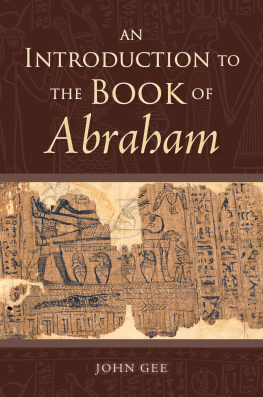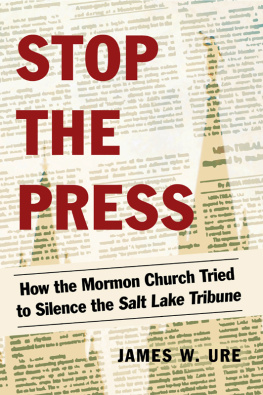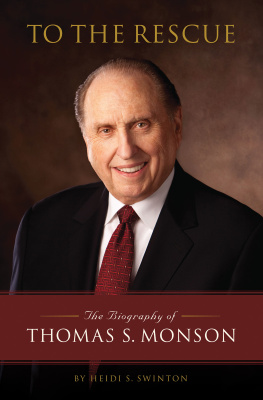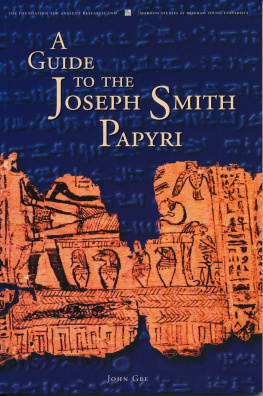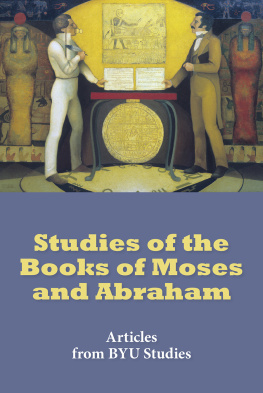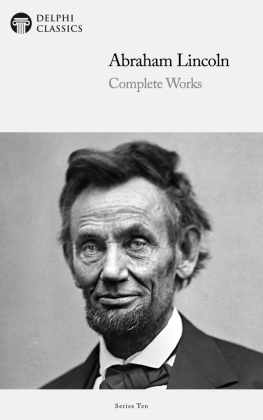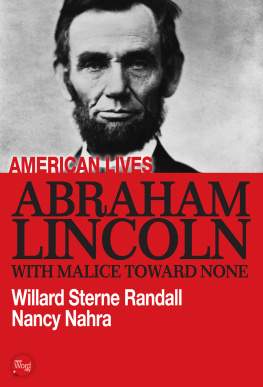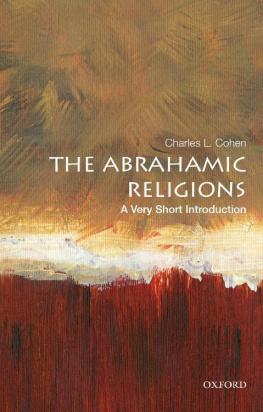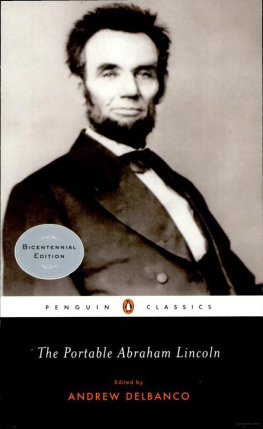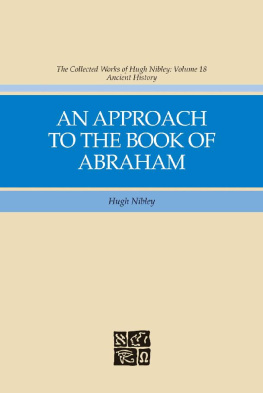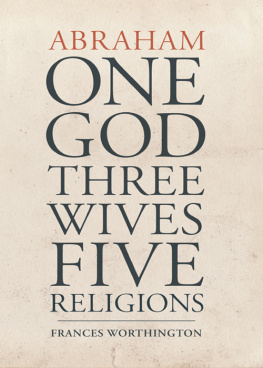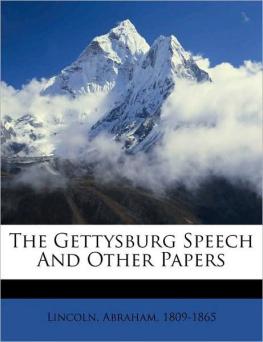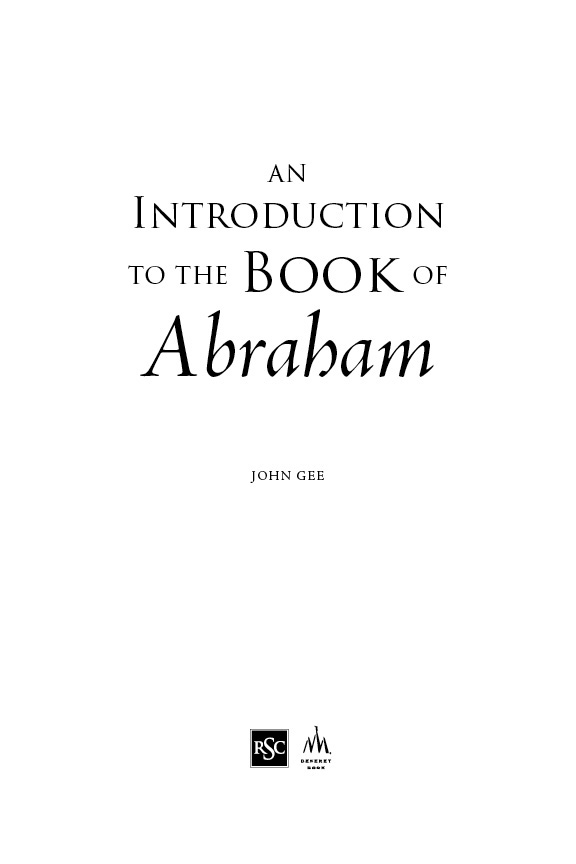Published by the Religious Studies Center, Brigham Young University, Provo, Utah, in cooperation with Deseret Book Company, Salt Lake City.
Visit us at rsc.byu.edu.
2017 by Brigham Young University. All rights reserved.
Printed in the United States of America by Sheridan Books, Inc.
Deseret Book is a registered trademark of Deseret Book Company.
Visit us at DeseretBook.com.
Any uses of this material beyond those allowed by the exemptions in US copyright law, such as section 107, Fair Use, and section 108, Library Copying, require the written permission of the publisher, Religious Studies Center, 185 HGB, Brigham Young University, Provo, Utah 84602. The views expressed herein are the responsibility of the authors and do not necessarily represent the position of Brigham Young University or the Religious Studies Center.
Cover and interior design by Carmen Durland Cole.
ISBN: 978-1-9443-9406-6
US Retail: $19.99
Library of Congress Cataloging-in-Publication Data
Names: Gee, John Laurence, author.
Title: An introduction to the Book of Abraham / John Gee.
Description: Provo, Utah : Religious Studies Center, Brigham Young University;
Salt Lake City : Deseret Book, [2017] | Includes index.
Identifiers: LCCN 2016020874 | ISBN 9781944394066
Subjects: LCSH: Pearl of Great Price. Book of Abraham. | Church of Jesus
Christ of Latter-day SaintsDoctrines. | Mormon ChurchDoctrines.
Classification: LCC BX8629.P53 G44 2016 | DDC 289.3/24dc23 LC record available at https://lccn.loc.gov/2016020874
Acknowledgments
This publication is possible because of the diligent work and assistance of others besides the author.
I would like to thank Kevin Barney, Brent Belnap, Jerry Benson, Glen Cooper, Alison V. P. Coutts, Steven Densley, Clark Gee, Kathleen Gee, Laurence Gee, Samuel Gee, Andrew Hedges, Brian M. Hauglid, Michael MacKay, Kerry Muhlestein, Mike Parker, Ugo Perego, Noel B. Reynolds, Matthew Roper, William Schryver, Royal Skousen, Brian L. Smith, Whitney Stoker, John S. Thompson, John A. Tvedtnes, Richard E. Turley Jr., Ted Vaggelis, Thomas Wayment, Jed Woodworth, and some anonymous reviewers for their suggestions for improvements. Matthew Roper particularly brought historical accounts to my attention that have been very useful.
Thomas Wayment and his team at the Religious Studies Center have been helpful editing and designing my work for publication. This includes production supervisor Brent R. Nordgren and publications coordinator Joany Pinegar. It has been a pleasure to work with designer Carmen Cole again. I also appreciate the work of editors Hadley Griggs, Kimball Gardner, Devan Jensen, and Leah Welker. The Gay family generously supported the research on this book through the William (Bill) Gay Research Chair.
Much gratitude goes to my parents for encouraging and supporting me in my studies.
Finally, I wish to thank my wife and children for their support and reminders that there is more to life than papyrimuch more.
Introduction
The goal with the Introduction to the Book of Abraham is to make reliable information about the Book of Abraham accessible to the general reader. Although based on extensive academic research, it is not primarily an academic work.
This volume builds on previous work. My previous book, A Guide to the Joseph Smith Papyri , was prepared after more than a dozen years of answering questions about the Joseph Smith Papyri on a weekly, if not daily, basis. The Guide to the Joseph Smith Papyri was intended to provide up-to-date, reliable, and readily available information on the Joseph Smith Papyri to individuals who have little knowledge of ancient Egypt and perhaps little knowledge of the Latter-day Saints. I would like to think that the guide helped readers understand the issues better. It has sold out. In the meantime, its publisher, the Foundation for Ancient Research and Mormon Studies, no longer exists as such. The need for something like the guide still exists. Further research would have necessitated major revisions of all the chapters. More experience has taught me what I hope are better or clearer ways to explain some of the concepts. Additionally, the guide did not address many topics dealing specifically with the Book of Abraham. As a result, I have rewritten this work from the ground up.
Because the purpose of this Introduction to the Book of Abraham is to make reliable information about the Book of Abraham accessible to the general reader, no specialist knowledge of Egyptology or of The Church of Jesus Christ of Latter-day Saints is assumed. To make it easier for the nonspecialist reader, I have given Egyptian terms in their late-period voweled (Coptic) forms rather than using the standard transliteration of earlier time periods, which has no vowels and thus is impossible to pronounce for modern English speakers. Also, the assumption is that the reader is a busy person with many matters begging for attention; therefore, the discussion has been kept concise. In that view, I have tried to make complicated or technical arguments understandable but brief. References have been limited to direct quotations. Those interested in more information may consult the readings listed at the end of each chapter. Because I have had full access to a great deal of unpublished research, not everything that appears in the text is necessarily found in the sources cited.
While I have striven to make this book as accurate as possible, there may still be errors. New evidence that comes to light has had a way of showing that we have been proceeding on the basis of unrecognized and usually unjustified assumptions.
In any case, this work is not an official publication of The Church of Jesus Christ of Latter-day Saints, and it does not necessarily represent the official positions of the Church, Brigham Young University, the Religious Studies Center, Deseret Book, or the Neal A. Maxwell Institute for Religious Scholarship.
chapter 1
Historical Overview
When the Book of Abraham was first published to the world in 1842, it was published as a translation of some ancient records that have fallen into [Joseph Smiths] hands from the catacombs of Egypt, purporting to be the writings of Abraham while he was in Egypt, called The Book of Abraham, Written by his Own Hand, upon Papyrus. The resultant record was thus connected with the papyri once owned by Joseph Smith, though which papyrus of the four or five in his possession was never specified. Those papyri would likely interest only a few specialistswere the papyri not bound up in a religious controversy. This controversy covers a number of interrelated issues, and an even greater number of theories have been put forward about these issues. Given the amount of information available, the various theories, and the variety of fields of study the subject requires, misunderstandings and misinformation often prevail. It is useful to have a brief overview of the basic history.
Early History of the Papyri
In the early part of the nineteenth century, Bernardino Drovetti was the French consul in Alexandria and was heavily involved in the trade in Egyptian antiquities; his antiquities have ended up in museums all over Europe. He employed a number of individuals who helped him acquire and distribute antiquities. One of his agents was Antonio Lebolo, who, with others, plundered several tombs in Thebes in southern Egypt. In the process, Drovettis agents stumbled across a number of Ptolemaic-period burials in Thebes. In 1825 Drovetti commissioned Lebolo to select some of his antiquities to send to America. These included eleven mummies and a number of papyri. Although previously it has been assumed that the papyri were discovered with the mummies, this is not necessarily the case. Records of the excavators say that they kept the papyri separate from the other finds. One mummy had two papyri, one of which went to America and the other to a museum in Europe. Since the papyri were separated from each other, none of the papyri necessarily belonged to the mummy they accompanied.

